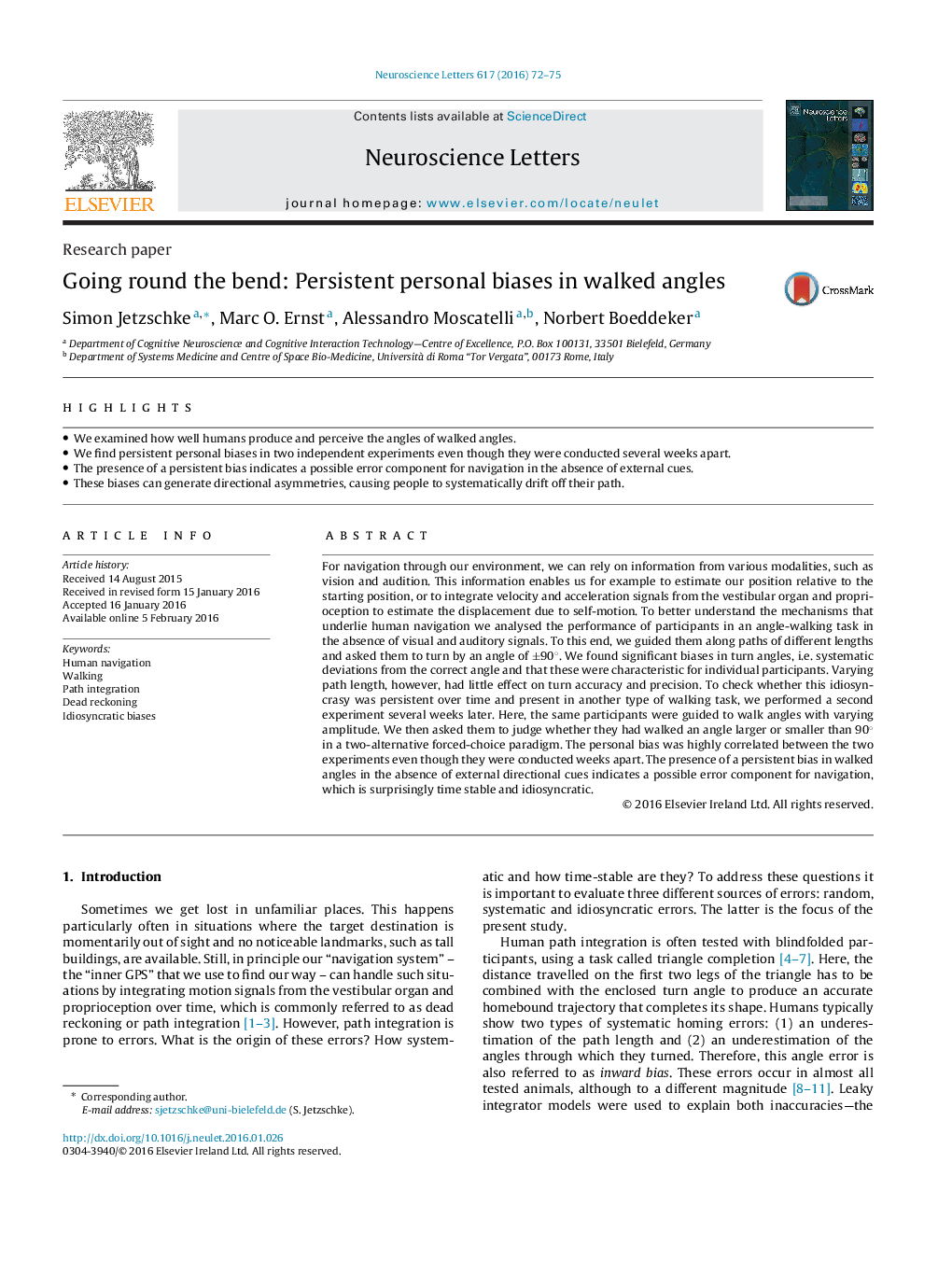| کد مقاله | کد نشریه | سال انتشار | مقاله انگلیسی | نسخه تمام متن |
|---|---|---|---|---|
| 6279910 | 1615082 | 2016 | 4 صفحه PDF | دانلود رایگان |
عنوان انگلیسی مقاله ISI
Going round the bend: Persistent personal biases in walked angles
ترجمه فارسی عنوان
دور خم شدن: تعصب های مکرر شخصی در زوایای راه رفتن
دانلود مقاله + سفارش ترجمه
دانلود مقاله ISI انگلیسی
رایگان برای ایرانیان
کلمات کلیدی
ناوبری انسانی، پیاده روی، یکپارچه سازی مسیر، محاسبه مرده، تعصب ایدئوسنکراسی،
موضوعات مرتبط
علوم زیستی و بیوفناوری
علم عصب شناسی
علوم اعصاب (عمومی)
چکیده انگلیسی
For navigation through our environment, we can rely on information from various modalities, such as vision and audition. This information enables us for example to estimate our position relative to the starting position, or to integrate velocity and acceleration signals from the vestibular organ and proprioception to estimate the displacement due to self-motion. To better understand the mechanisms that underlie human navigation we analysed the performance of participants in an angle-walking task in the absence of visual and auditory signals. To this end, we guided them along paths of different lengths and asked them to turn by an angle of ±90°. We found significant biases in turn angles, i.e. systematic deviations from the correct angle and that these were characteristic for individual participants. Varying path length, however, had little effect on turn accuracy and precision. To check whether this idiosyncrasy was persistent over time and present in another type of walking task, we performed a second experiment several weeks later. Here, the same participants were guided to walk angles with varying amplitude. We then asked them to judge whether they had walked an angle larger or smaller than 90° in a two-alternative forced-choice paradigm. The personal bias was highly correlated between the two experiments even though they were conducted weeks apart. The presence of a persistent bias in walked angles in the absence of external directional cues indicates a possible error component for navigation, which is surprisingly time stable and idiosyncratic.
ناشر
Database: Elsevier - ScienceDirect (ساینس دایرکت)
Journal: Neuroscience Letters - Volume 617, 23 March 2016, Pages 72-75
Journal: Neuroscience Letters - Volume 617, 23 March 2016, Pages 72-75
نویسندگان
Simon Jetzschke, Marc O. Ernst, Alessandro Moscatelli, Norbert Boeddeker,
